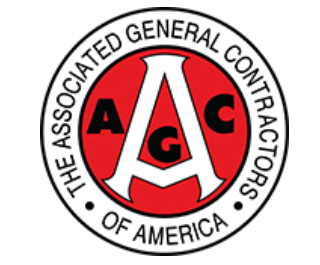 Riverside-San Bernardino-Ontario, Calif. and Cheyenne, Wyo. Experience Largest Year-over-Year Gains; Columbia, S.C. and Grand Forks, N.D.-Minn. Have Biggest Annual Declines in Construction Employment
Riverside-San Bernardino-Ontario, Calif. and Cheyenne, Wyo. Experience Largest Year-over-Year Gains; Columbia, S.C. and Grand Forks, N.D.-Minn. Have Biggest Annual Declines in Construction Employment
Construction employment increased in 269 out of 358 metro areas between December 2016 and December 2017, declined in 43 and stagnated in 46, according to a new analysis of federal employment data released today by the Associated General Contractors of America. Association officials said new infrastructure funding would help ensure firms continue to expand their headcount in 2018.
“Construction employment continues to expand amid robust private-sector demand in many parts of the country,” said Ken Simonson, the association’s chief economist. “But with public-sector funding lagging, there is little doubt that more firms would be able to expand their headcount this year if Congress would enact a substantial boost in infrastructure projects, as many members of both parties advocate.”
Riverside-San Bernardino-Ontario, Calif. added the most construction jobs during the past year (14,300 jobs, 15 percent), followed by Las Vegas-Henderson-Paradise, Nev. (10,800 jobs, 18 percent); New York City, N.Y. (10,100 jobs, 7 percent); San Antonio-New Braunfels, Texas (7,900 jobs, 15 percent) and Phoenix-Mesa-Scottsdale, Ariz. (7,600 jobs, 7 percent). The largest percentage gains occurred in the Cheyenne, Wyo. metro area (25 percent, 800 jobs), followed by Wenatchee, Wash. (21 percent, 500 jobs); Punta Gorda, Fla. (20 percent, 800 jobs); Omaha-Council Bluffs, Neb.-Iowa (19 percent, 4,800 jobs); and Las Vegas-Henderson-Paradise, Nev. (18 percent, 10,800 jobs).
The largest job losses from December 2016 to December 2017 were in Columbia, S.C. (-3,200 jobs, -20 percent), followed by Kansas City, Mo. (-2,800 jobs, -10 percent); Middlesex-Monmouth-Ocean, N.J. (-1,200 jobs, -3 percent); Bergen-Hudson-Passaic, N.J. (-1,100 jobs, -4 percent) and Milwaukee-Waukesha-West Allis, Wisc. (-1,100 jobs, -4 percent). The largest percentage decreases for the year were in Grand Forks, N.D.-Minn. (-24 percent, -1,000 jobs) followed by Columbia, S.C.; Danville, Ill. (-20 percent, -100 jobs) and Kansas City, Mo.
Association officials said that firms in many parts of the country have continued to expand as private-sector demand for new construction projects continues to hit record levels. They cautioned, however, that public-sector funding for roads and bridges declined in 2017 making it hard for many firms that build infrastructure to expand. Worse, lagging investments in infrastructure will lead to greater economic inefficiency as traffic grows, bridges age and waterways continue to degrade, they warned.
“One of the biggest threats to the current economic expansion is that our aging infrastructure will cause shipping and traffic delays, which will raise costs, slow schedules and create new inefficiencies,” said Stephen E. Sandherr, the association’s chief executive officer. “Rebuilding public infrastructure will help our economy remain competitive and ensure that construction employers continue to add jobs.”
View the metro employment data by rank and state. View metro employment map.
Editorial Director and Senior Writer for TileLetter and TileLetter ARTISAN
Lesley Goddin has been writing and journaling since her first diary at age 11. Her journey has taken her through a career in publishing and publicity, landing her the editor position of TileLetter and its special publications in 2006. Her goal is to educate, inspire, recognize and encourage those in the tile industry -- especially the tile and stone contractor.







